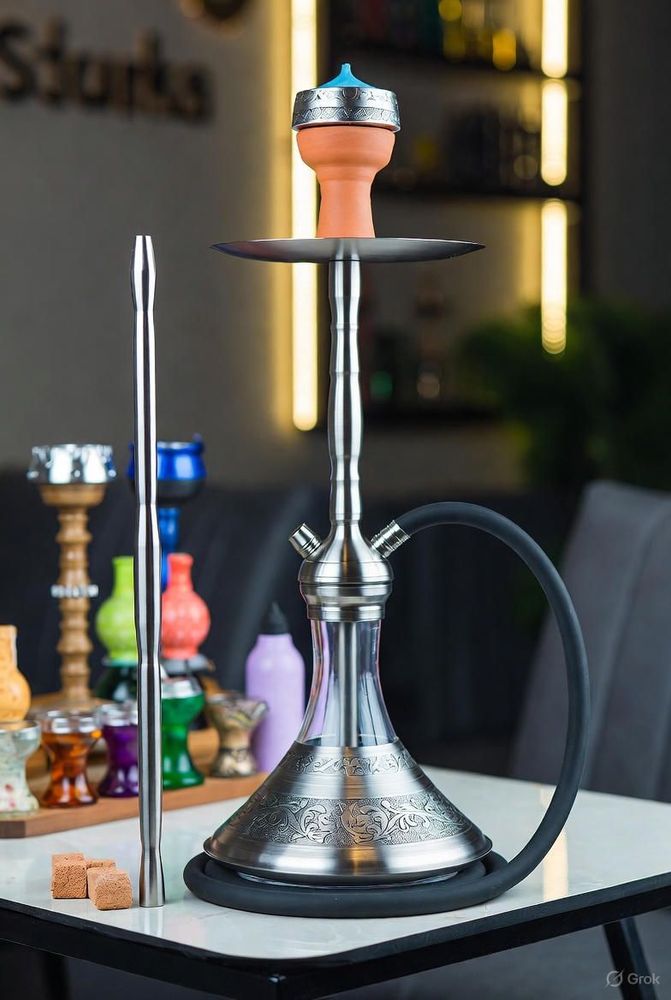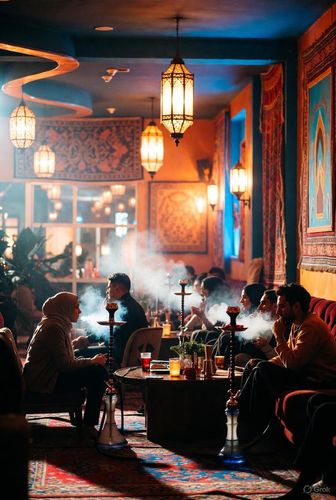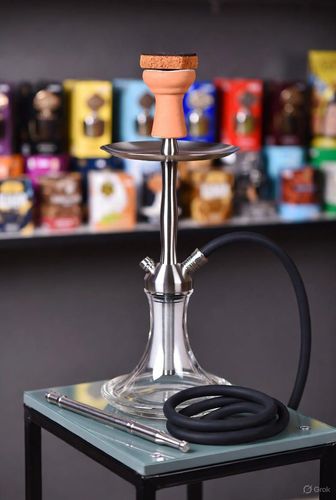Hookah, known as shisha, nargile, or waterpipe across cultures, is far more than a smoking device—it's a symbol of hospitality, relaxation, and social connection with roots stretching back over 500 years. While today’s sleek stainless steel models dominate lounges worldwide, the journey began in humble clay and glass, evolving through empires, trade routes, and modern innovation.
Origins in 16th-Century India and Persia
The earliest hookahs emerged in India during the Mughal Empire. Physicians initially designed simple water-filtered pipes to cool and purify tobacco smoke, believing it reduced health risks—a misconception that persists in myth today. Crafted from coconut shells and bamboo, these primitivehuqqaused a clay chillum (bowl) and a flexible hose made from animal skin or fabric.
By the late 1500s, the design reached Persia, where artisans elevated it into an art form. Intricate brass stems, hand-blown glass bases, and silk-wrapped hoses became status symbols in royal courts. Persian poets like Hafez celebrated the hookah as a companion for contemplation, often pairing it with tea, music, and conversation.
Spread Through the Ottoman Empire
The Ottoman Turks adopted and refined the hookah in the 17th century, renaming itnargile(from the Persian word for coconut). Istanbul’s coffeehouses became the first public hookah venues—social hubs where men debated politics, played backgammon, and shared flavored tobacco calledtömbeki, a strong, unflavored leaf soaked in molasses.
Glass bases painted with floral motifs and long wooden stems inlaid with mother-of-pearl defined the Turkish style. Women smoked in private harems, using smaller, more delicate versions. The ritual of packing, lighting, and passing the hose reinforced community bonds.
Colonial Era and Global Migration
British colonial officers in India encountered hookah in the 1800s and brought versions home, though they never gained mainstream popularity in Europe. Meanwhile, Lebanese, Syrian, and Egyptian migrants carried the tradition to the Americas and Australia in the early 20th century.
In Egypt,ma’assel—honey-sweetened, flavored tobacco—was born in the 1990s by brands like Nakhla. Fruits, mint, and spices transformed hookah from a harsh nicotine hit into a smooth, aromatic experience. This innovation fueled the global lounge boom.
Cultural Significance and Controversy
In Arab culture, offering a hookah remains a gesture of welcome. In Turkey, it’s tied toçay(tea) culture. Yet health concerns shadow its rise—studies show a one-hour session equals smoking 100+ cigarettes due to prolonged inhalation.
Despite this, hookah persists as a social glue, bridging generations and borders. From Persian poetry to cloud-chasing competitions, its story reflects humanity’s enduring love for ritual, flavor, and shared moments.
The hookah isn’t just a pipe—it’s a passport to history, one puff at a time.



